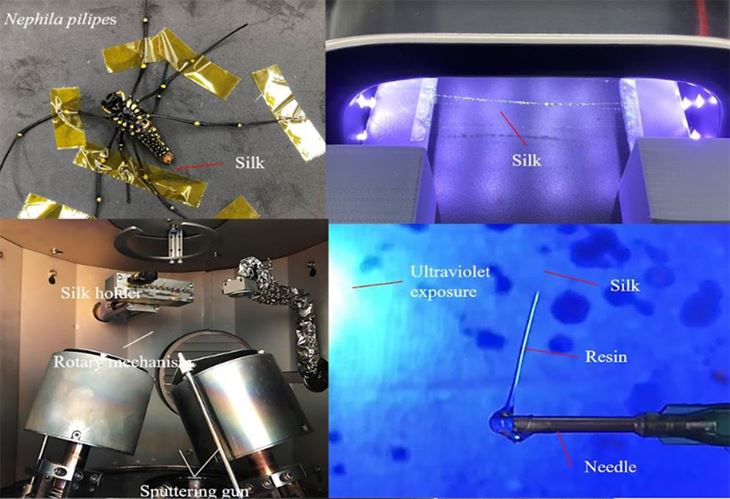(Chinese Health Network Reporter Man-Ying Huang / Taipei © Provided by Chinese Health Network)
It's amazing! The palm-sized Nephila pilipes spider is intimidating, but the spider's silk can be used to measure blood sugar and serve as a diabetes management tool. Prof. Cheng-Yang Liu and Ms. Xuan-Bei E of the Department of Biomedical Engineering, Yang Ming Jiaotong University, have successfully developed a fiber optic glucose sensor using the spider's spider silk.

Amazing! A spider with a human face spits out spider silk, but it can detect blood sugar! A new breakthrough in measuring blood glucose with fiber optics © by Chinese Health Network
With the aging population, diabetes is now a common disease. Patients who monitor their blood glucose by puncture at home are not only prone to the risk of infection, but also the puncture needle becomes medical waste after one use, so scientists are always striving to develop more convenient and real-time blood glucose detection methods.
Unlike traditional optical fibers made of glass or plastic, spider silk not only has good ductility and physical properties such as light wave transmission, but also has a high degree of biocompatibility, making it very suitable for use in the human body. After obtaining natural spider silk from a live spider, Prof. Cheng-Yang Liu's research team, in collaboration with Taipei Medical University and Taiwan Instrument Technology Research Center of National Taiwan Research Institute, first stabilized the spider silk structure with light-curing resin, and then sputtered a thin nanogold shell on the surface of the cured spider silk with an oblique thin-film sputtering technique to increase the sensitivity of the spider silk fiber to sugar concentration. The final product is a fiber optic sensor with a diameter of about a hair and visible to the naked eye.

The process of spider fiber fabrication. (Photo courtesy of Yang Ming Jiaotong University) © Courtesy of Chinese Health Network
Through the optical physics principle of surface plasmon resonance (SPR), scientists can calculate the refractive index of different sugars on metals to know their concentration changes. The optical sensor developed by Prof. Cheng-Yang Liu has been experimentally proven to maintain the same sensitivity over a year and to function normally at room temperature and human body temperature.
.jpg)
The research team led by Prof. Cheng-Yang Liu uses spider fiber to measure blood glucose, which can be a tool for future diabetes management. (Photo courtesy of Yang Ming Jiaotong University) © Courtesy of Chinese Health Network
In fact, in order to find suitable materials, the R&D team tried two to three different species of spiders and also caught spiders on campus for experiments, but unfortunately, the quality of spider silk was not very stable, and only after many attempts did they choose the sphinx spider as the main target. In order to get high quality spider silk, the R&D team must also learn how to keep spiders and design silk extraction methods.
The spiders were not only huge, but they were also afraid of spiders with long faces on their backs at first. In the process of making the spider silk fiber, the research team also tried a variety of resins, gold, silver, copper and other metals, so they met the bosses of reptile stores, resin manufacturers, etc., which is considered an unexpected harvest.
Prof. Cheng-Yang Liu said that diabetic patients need to monitor their blood sugar before and after meals, and a sensor that can be used in the human body for a long time and measure blood sugar accurately in real time will not only solve the patients' problems, but also achieve the goal of precision medicine and benefit more chronic disease patients.
In addition to Yang Ming Jiaotong University, the research results also include the participation of researcher Weijun Chen, researcher Zheqin Chen, and professor Jiaxiong Cheng from the Department of Medicine, National Taiwan Research Institute. The research results will be published in the September issue of Biomedical Optics Express and selected as an Editor's Choice for the publication.
